Narrated PowerPoint Presentation: Understaffing in Aged Care Homes
VerifiedAdded on 2022/09/28
|9
|776
|24
Presentation
AI Summary
This narrated PowerPoint presentation addresses the critical issue of understaffing in residential aged care homes. It provides an overview of the problem, highlighting its impact on patient safety and the well-being of healthcare staff. The presentation delves into the background of the issue, explaining its significance and the challenges faced by the elderly residents and the nursing workforce. It outlines the objectives of the presentation, focusing on identifying the underlying causes of burnout among nurses, the factors affected by staff shortages, and potential solutions to improve healthcare services for older adults. The presentation concludes by summarizing the importance of addressing understaffing to ensure quality care, reduce medical errors, and promote job satisfaction among nurses, supported by evidence-based literature. This presentation is designed to fulfill the requirements of a nursing assignment focusing on patient safety and a healthy workplace, providing a comprehensive analysis of the issues and potential solutions related to understaffing in aged care.
1 out of 9
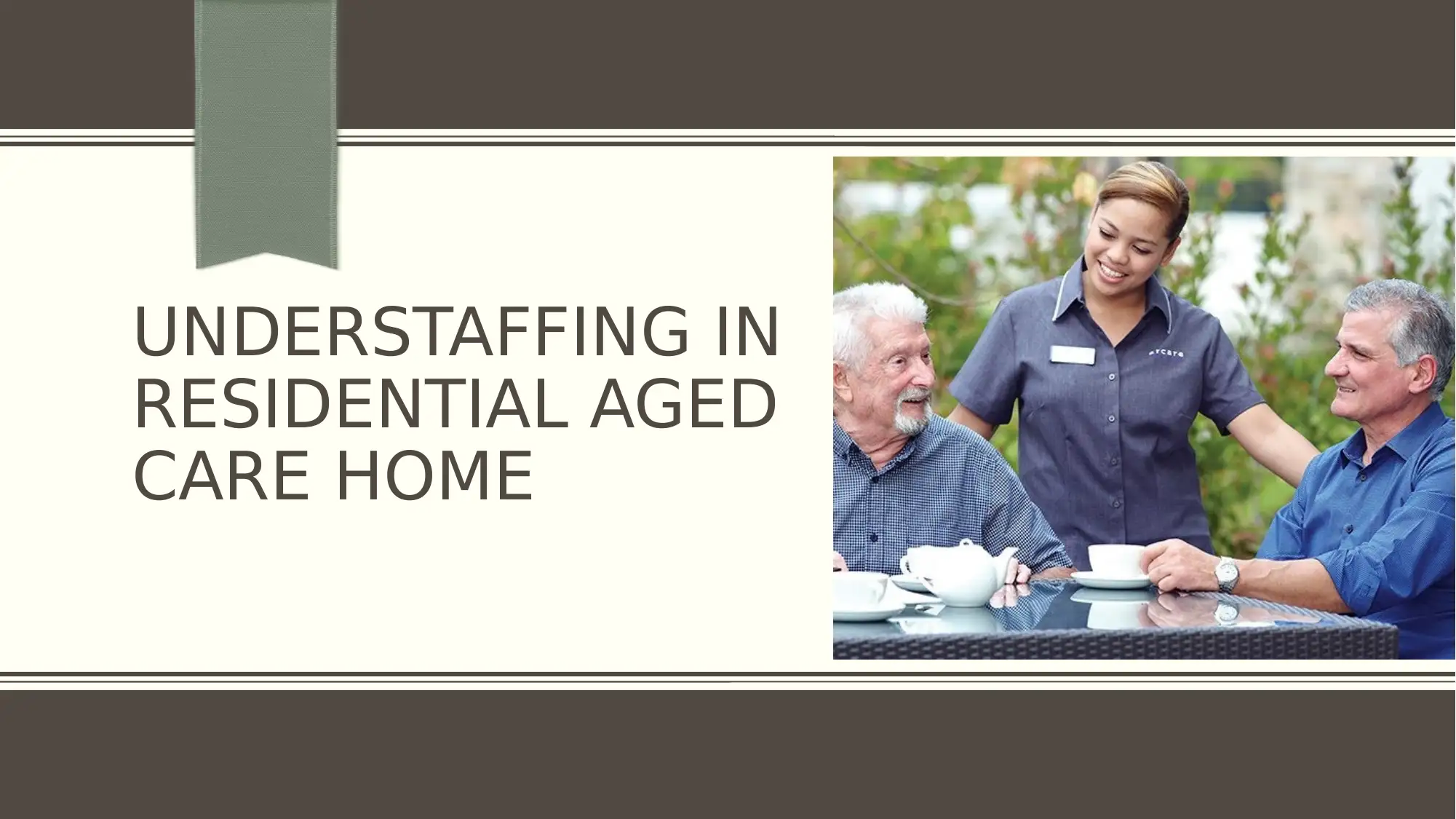
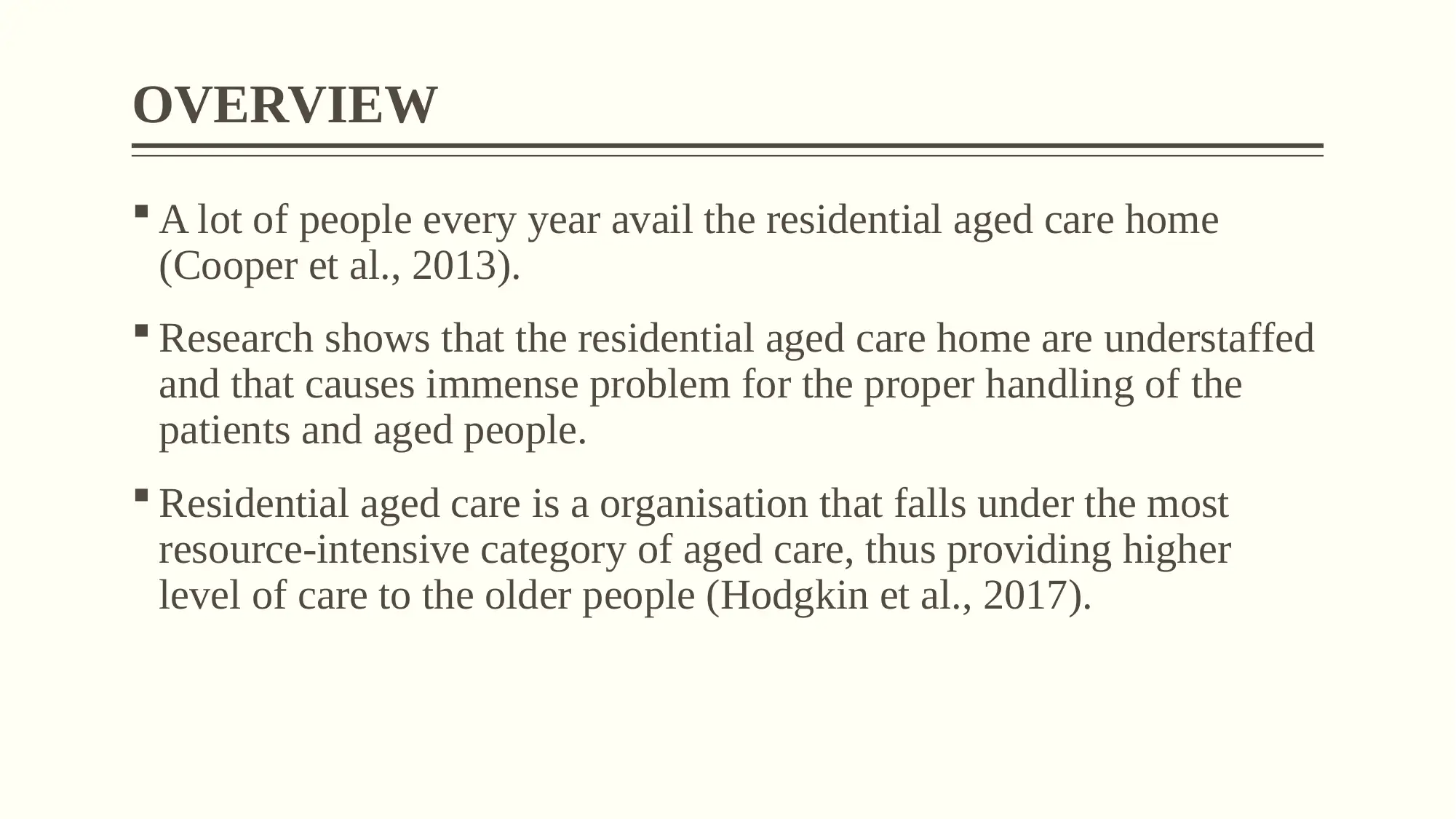
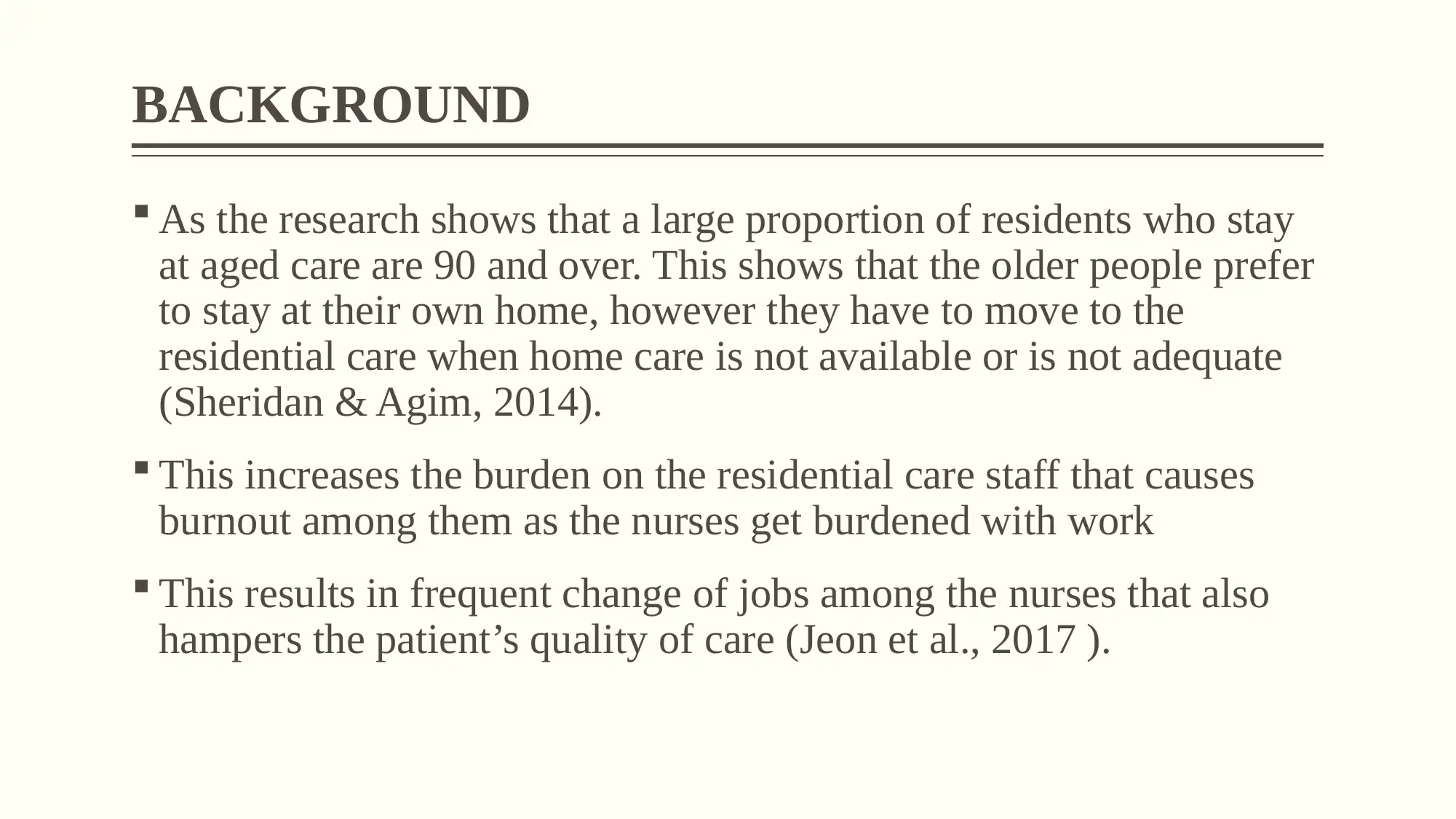

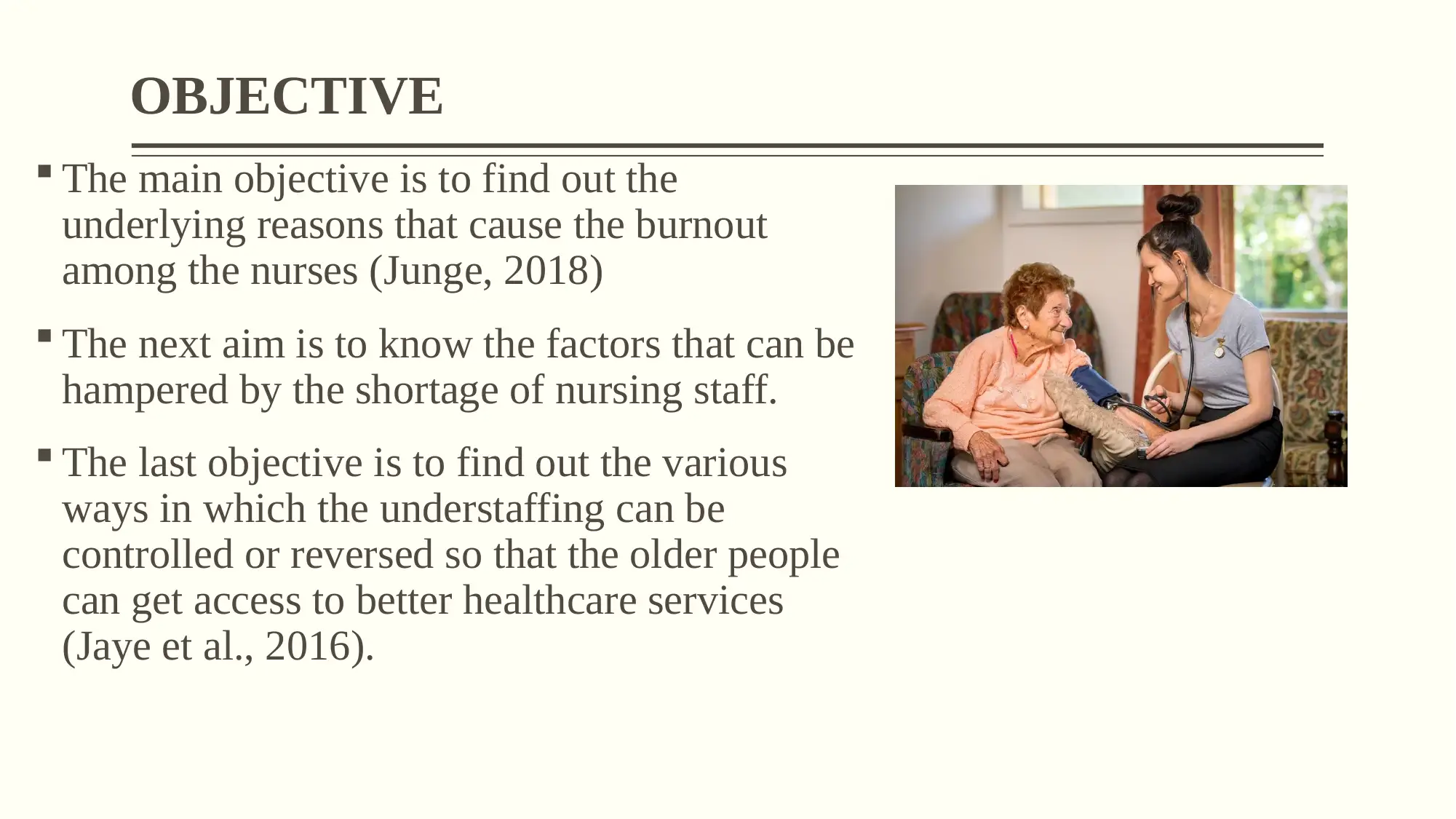
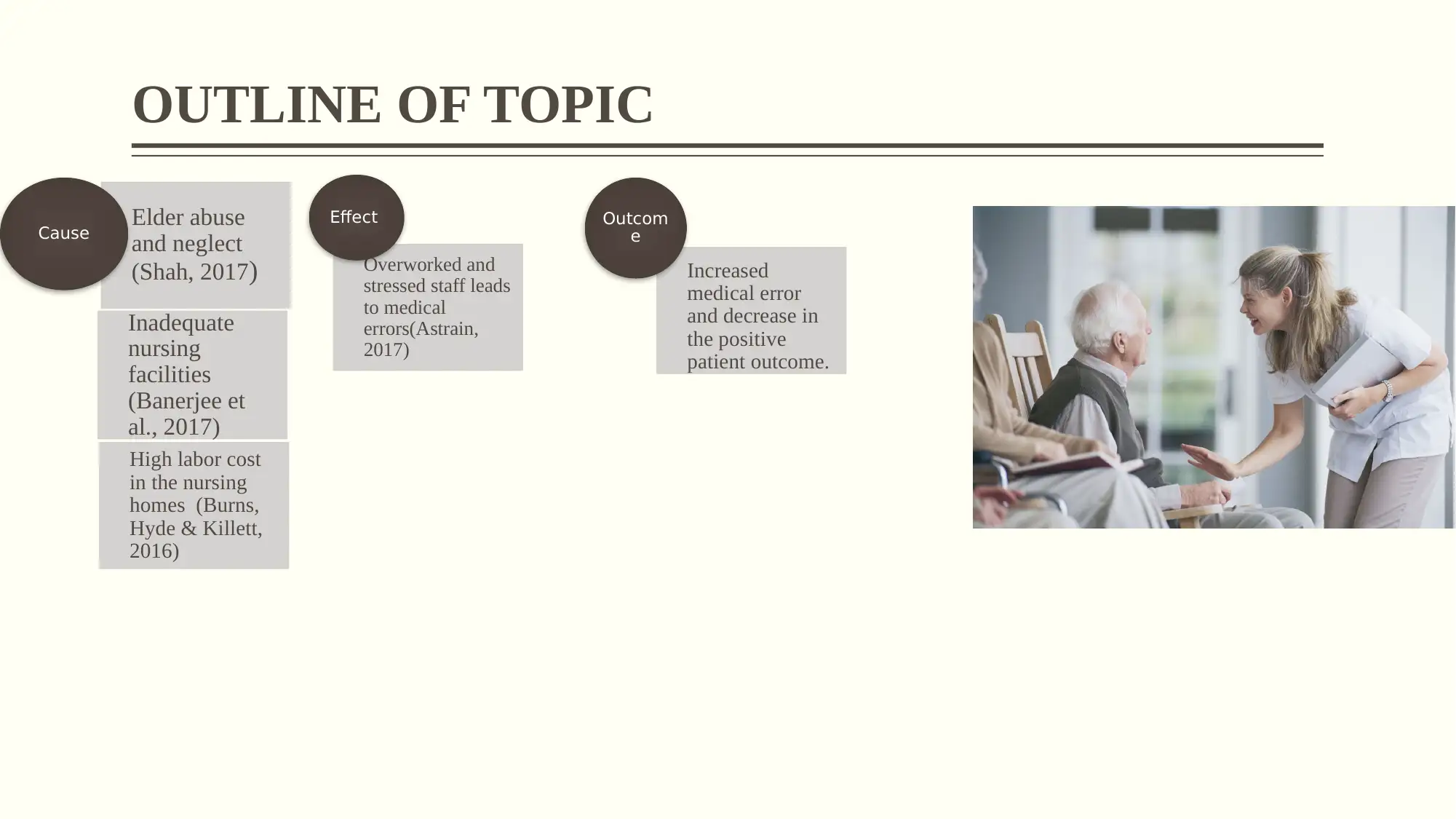
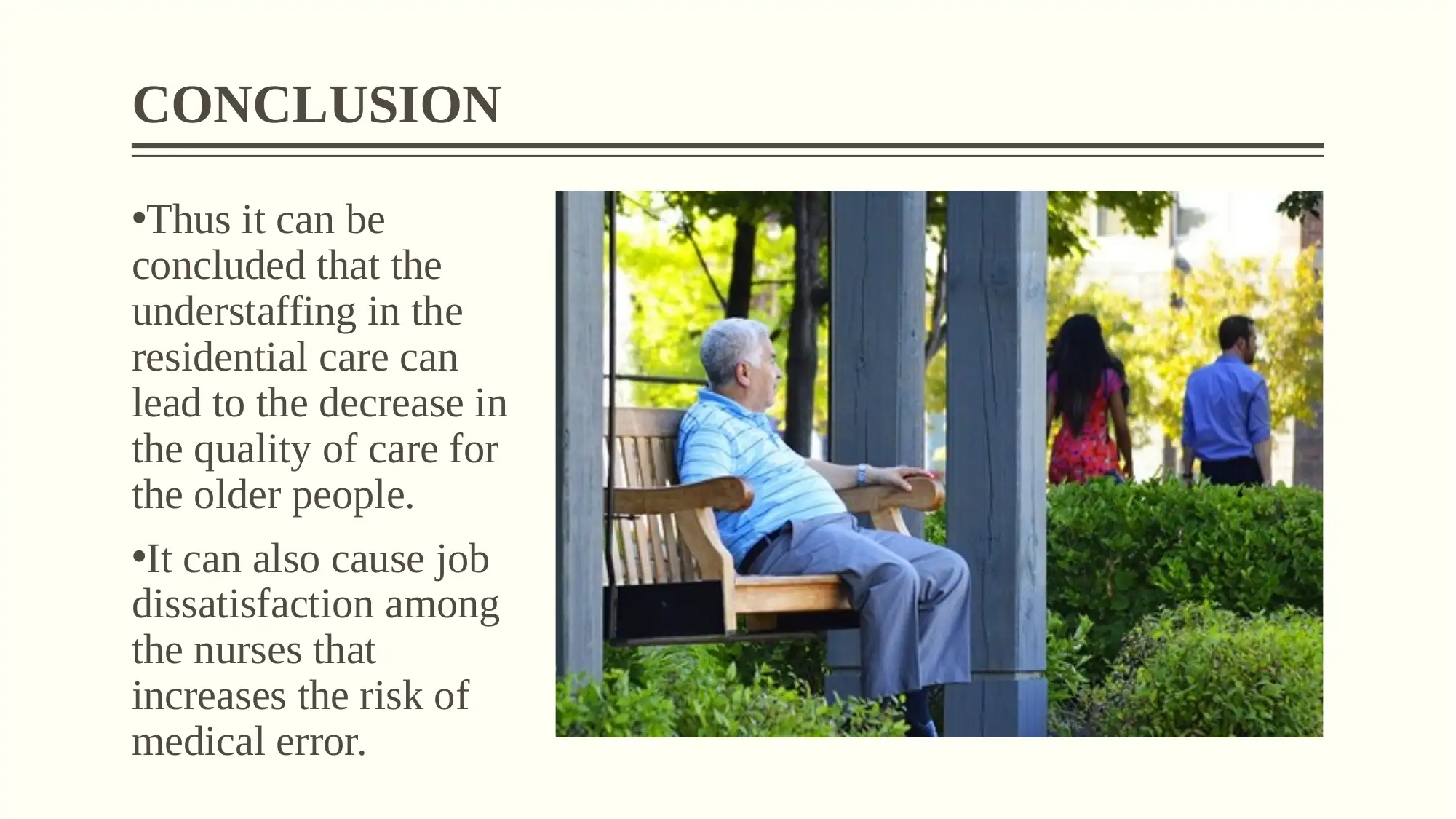
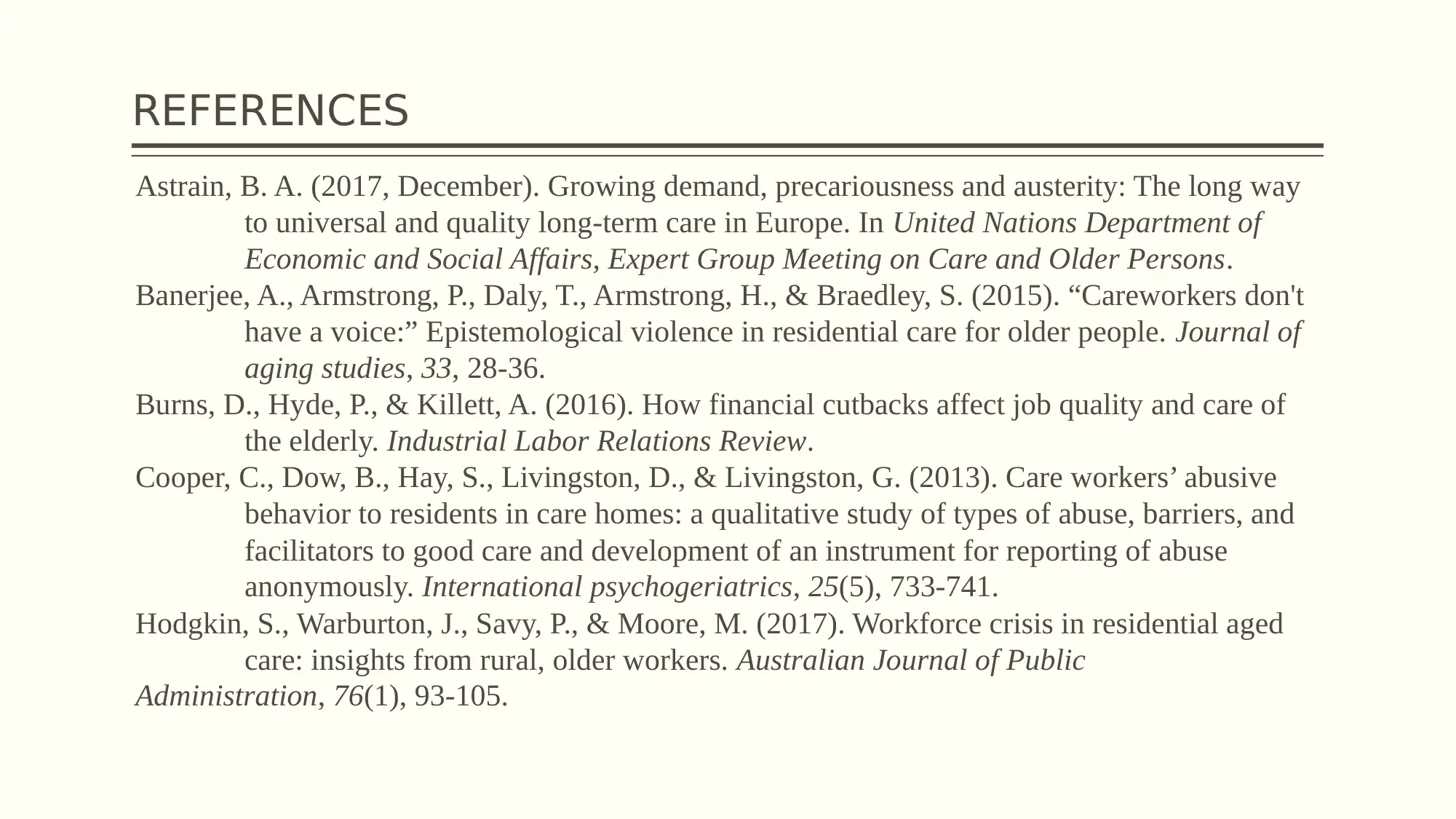
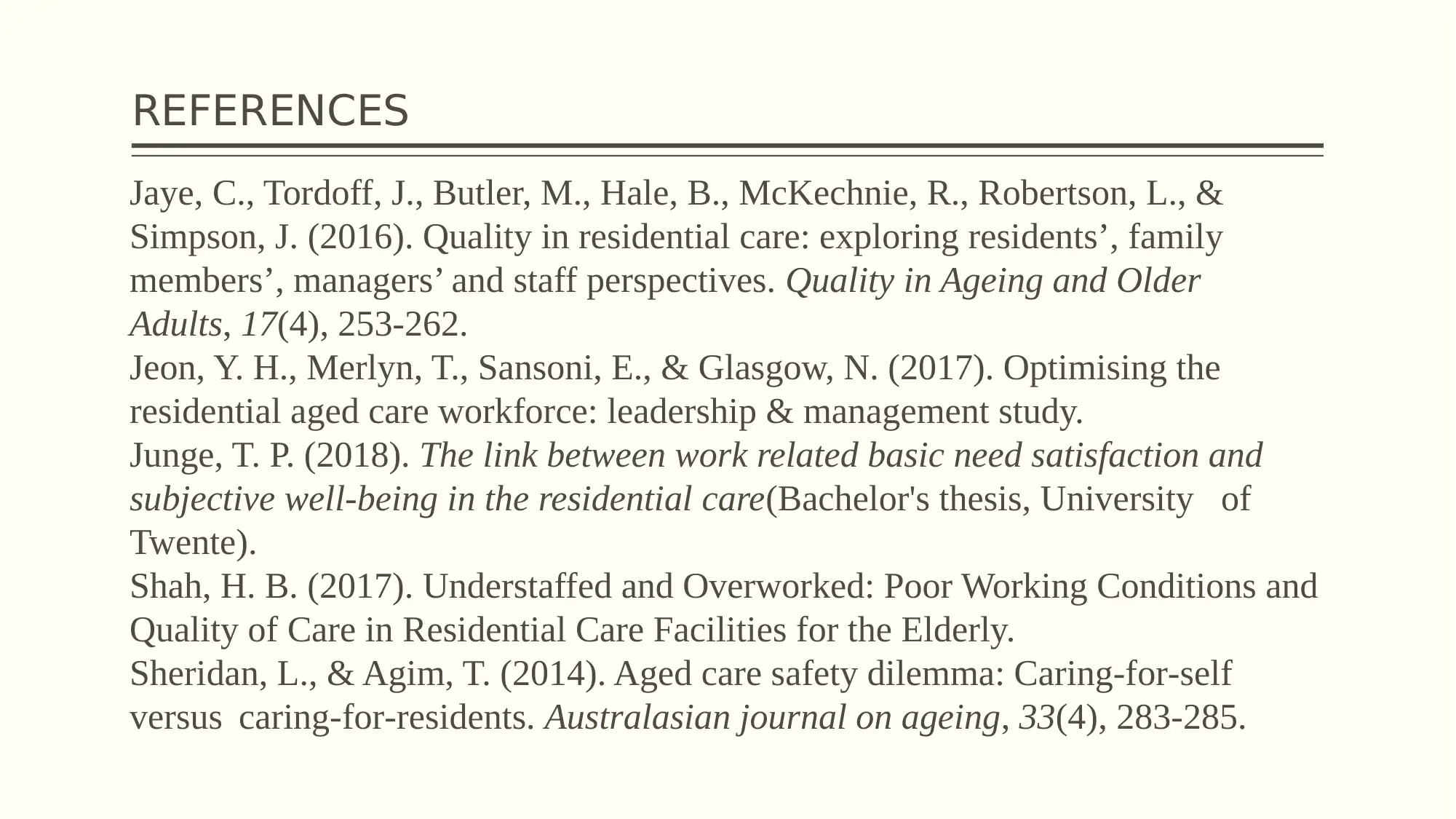







![[object Object]](/_next/static/media/star-bottom.7253800d.svg)